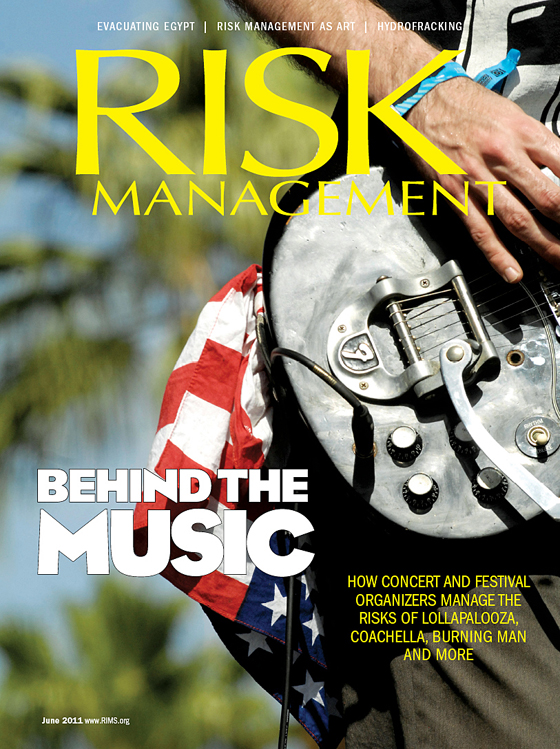Large corporations often find that the individual locations that comprise them function quite independently of one another, each exhibiting its own strengths, weaknesses, culture and capabilities. Security management functions are largely dependent on the efforts and experience of the management team at each location and their ability to solve problems, implement solutions and train and motivate employees.
These locations are like “fishbowls” – small, independent communities made up of their own employees, unique environments, and each having components that are never exactly the same for any two locations. A lot of effective problem-solving and risk management take place in the fishbowl. In many cases, the people operating in that fishbowl are often the most qualified to address security risks and liabilities challenges, as they understand the environment, the players and bring insight that those outside the fishbowl simply don’t have.
Still, there are many situations when managers simply can’t see the entire picture from within the fishbowl. In some cases, there is great value in addressing security and safety issues with help from the corporate level. Enterprises must hone their skills to know when problems are best resolved at the local level, and when corporate level knowledge and resources are beneficial.
Some examples demonstrate the value of addressing security risk and liabilities from “outside the fishbowl.
online pharmacy
azithromycin with best prices today in the USA
”

Case Study 1: Inability to See the Forest for the Trees
Managers in individual locations are accustomed to resolving their own problems. But it can be difficult to see the “big picture” that may present itself when looking across all locations. For example, a piece of manufacturing equipment that is malfunctioning may cause a manager of one location to conduct an inspection revealing that a piece of loose metal caused the machinery to malfunction. Employees may be sent home pending repairs while the manager submits a maintenance request and has the machinery back up and running in 24 hours.
In this situation, nothing further than a malfunction is suspected. However, the corporate office might notice that several plants had the same problem on that exact day and shift, rousing suspicions that there may have been foul play by employees who were cited as complaining about collective bargaining issues. With this information in mind, the scenario looks completely different and requires an investigate strategy and response. This is a situation that is impossible to see from inside the fishbowl.
Case Study 2: Lack of Expertise Makes It Difficult to Solve Problems in the Fishbowl
It is impossible for any single individual to be an expert in everything when it comes to security liabilities and risk mitigation. In some cases, a manager at a particular location will have a specific area of expertise that allows him to deal effectively with a problem that others can’t. If left unshared, this information is useful only to a single location, when it could be preventing losses across the entire organization.
For example, a security officer in one location notices that fire extinguishers are missing from the building. Based on native knowledge of drug processing and trafficking, coupled with information that their county has a meth problem, the officer’s deduction is startlingly simple. He knows that lots of fire extinguishers need to be on-hand during the process of cooking methamphetamines.
online pharmacy
paxil with best prices today in the USA
This triggers an additional investigation and identification of drug activity on the property.
Managers at other locations simply do not have this knowledge and are unable to point to a cause for the missing fire extinguishers. Thus, they are replaced, case closed. With the right information, our risks associated with drugs on the property could be greatly reduced. Corporate executives must facilitate and encourage knowledge-sharing among all locations.
Case Study 3: Trending Information Can Reveal Causes
Many organizations conduct assessments, but fail to compare results effectively across the enterprise. For example, some locations may report a high number of accidents and incidents in the parking lot such as assaults, vandalism or personal injuries caused by unsafe conditions. All locations have emergency call phones in the parking lots to notify security of an incident. They all have gated entrances and exits, preventing unauthorized entries. But managers are unable to determine why they have a higher incident rate than other locations do.
online pharmacy
renova with best prices today in the USA
Comparing assessment results, executives note that troubled locations are cited for insufficient lighting in outdoor traffic areas. Through custom assessment reporting, they are able to draw this conclusion: poor lighting leads to higher incidents in parking lots. With this information in mind, rather than making random trial-and-error resolutions, they can definitively point to improved lighting as a way to solve the problem. This insight is available only through trending information that comes from comparing multiple locations.
While solving problems at the local level is effective in many cases, there is much to be gained from evaluating problems and challenges from outside the fishbowl. Giving their locations this insight and education will help enterprises create a more secure environment much more quickly.




